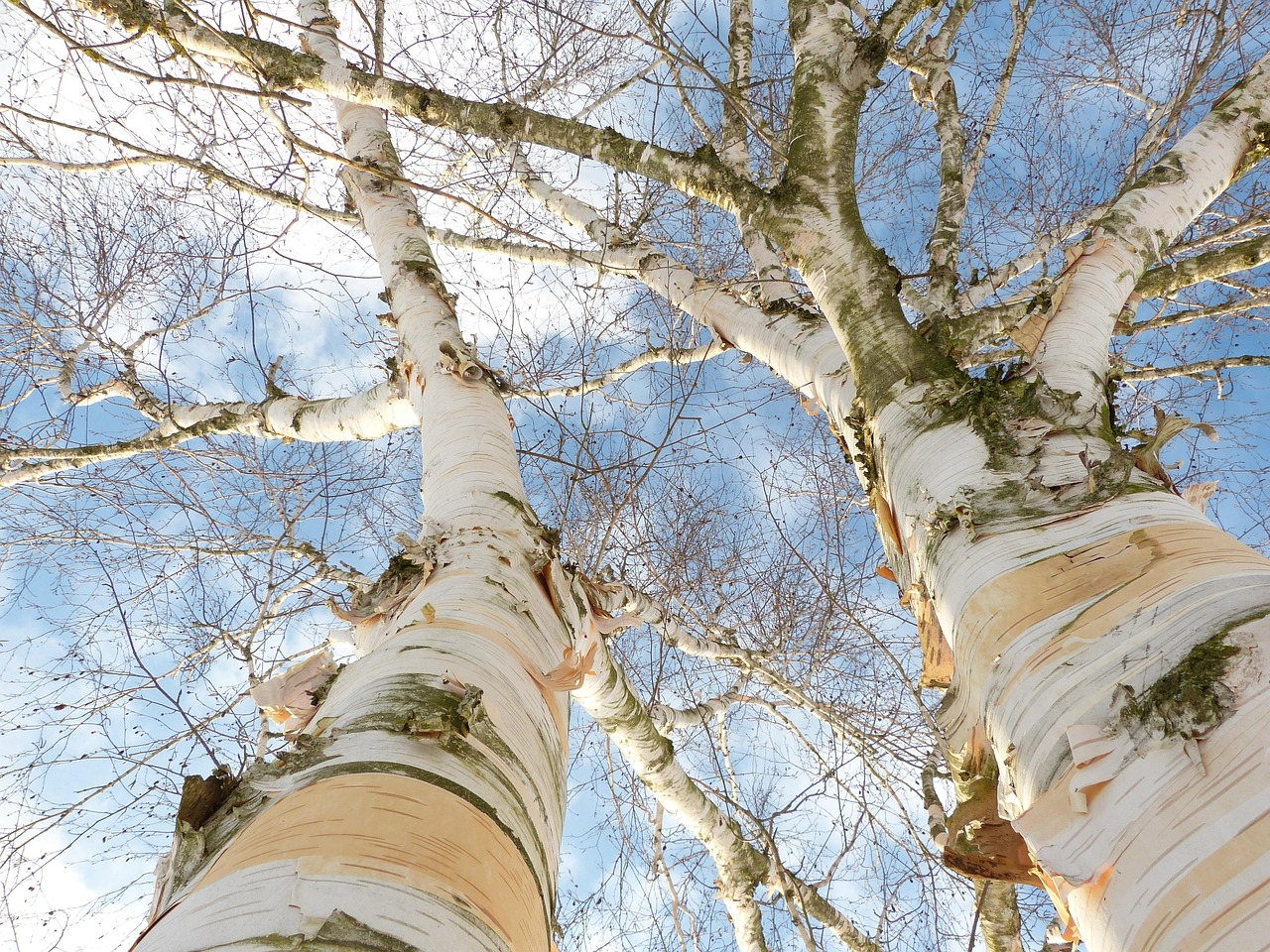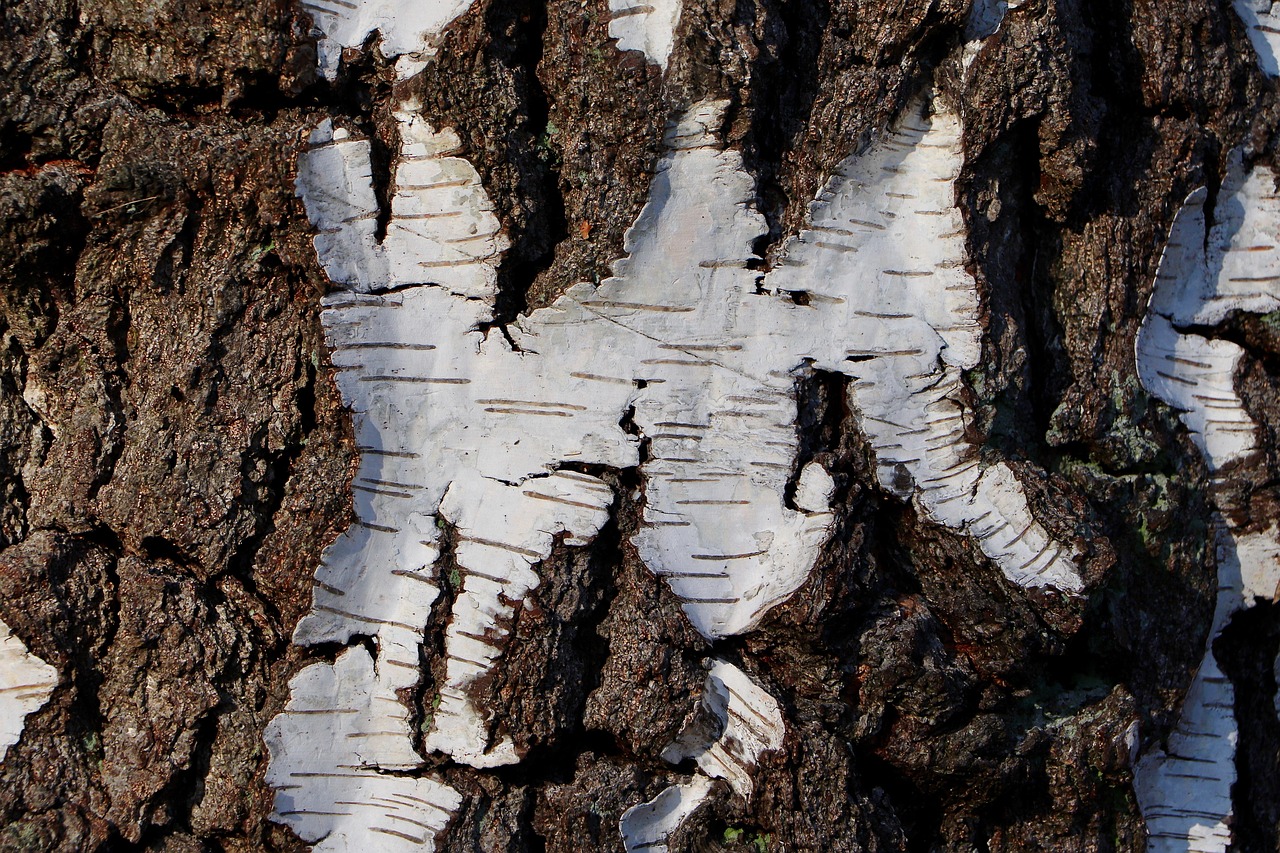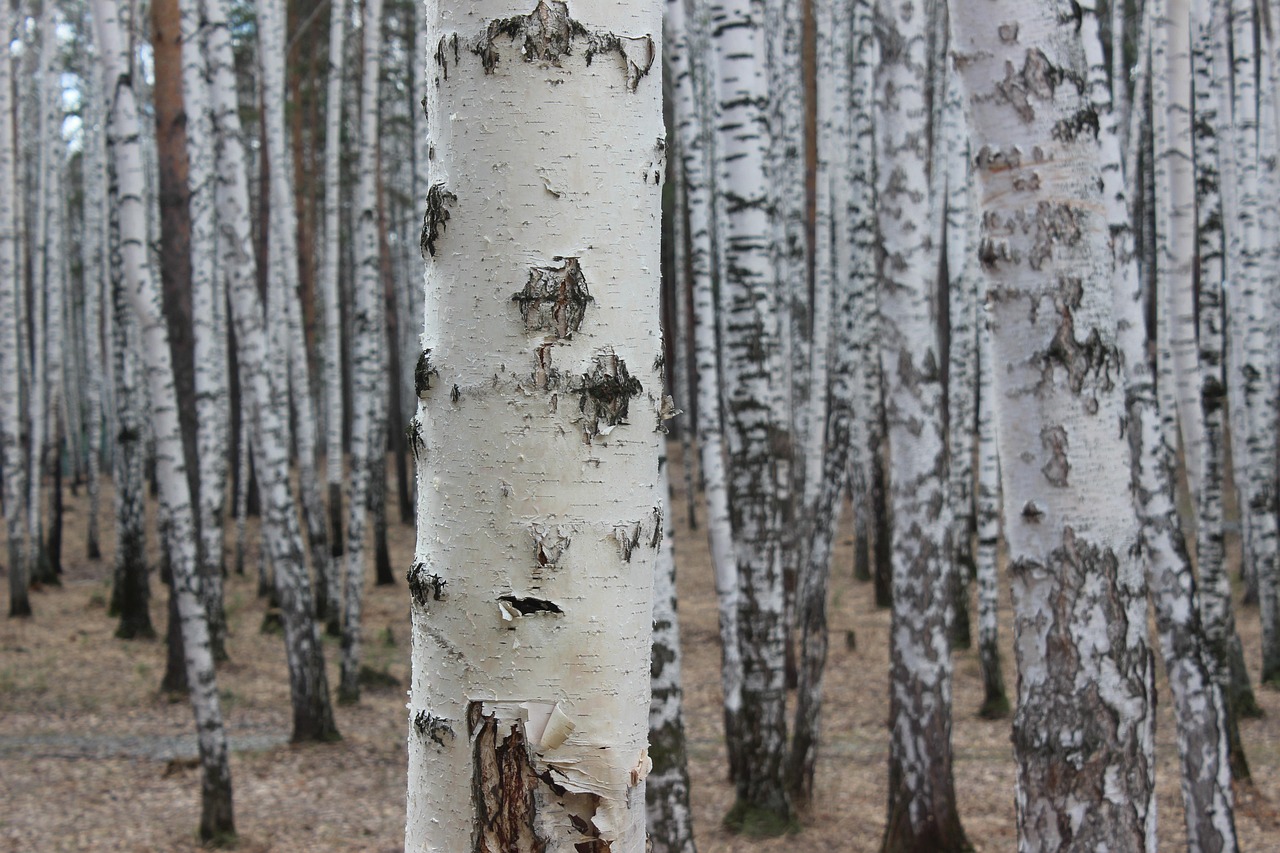Birch bark harvesting involves careful techniques that promote sustainability while maximizing its uses. By employing methods such as selective harvesting and proper timing, we can ensure that birch trees remain healthy and productive. The harvested bark serves various purposes, including crafts, medicine, and construction.
Understanding Birch Bark and Its Importance

Birch bark is the outer layer of the birch tree, primarily found in species like Betula papyrifera and Betula lenta. This natural resource has been utilized for centuries by indigenous cultures across North America and Europe. Its unique properties make it not only beautiful but also versatile.
The bark is lightweight, waterproof, and resilient, making it an ideal material for a variety of applications. Historically, it has been used to create containers, roofing materials, and even canoes. Today, birch bark continues to be popular in crafting, art, and sustainable building practices.
The Ecological Role of Birch Trees
Birch trees play a vital role in their ecosystems. They provide habitat and food for numerous species, including birds, mammals, and insects. Additionally, birch trees contribute to soil health by improving nutrient cycling. As pioneer species, they help to establish new forests after disturbances like fire or logging.
Harvesting birch bark sustainably is crucial to maintaining the balance of these ecosystems. Improper harvesting can lead to tree damage, which may affect their overall health and longevity.
Sustainable Harvesting Methods
To ensure the continued growth and health of birch trees, sustainable harvesting methods must be followed. Here are some key practices:
- Selective Harvesting: Only a portion of the bark is removed from each tree. This method allows the tree to continue growing and producing new bark.
- Timing: Harvesting is best done in late summer or early fall when the sap is flowing. This makes the bark easier to peel without harming the tree.
- Tools: Using sharp knives or specialized tools minimizes damage to the tree during the harvesting process.
- Monitoring: Regularly checking the health of harvested trees helps ensure that they are thriving post-harvest.
Uses of Birch Bark
The versatility of birch bark extends across various domains. Some common uses include:
- Crafting: Artists and crafters use birch bark to create items such as baskets, ornaments, and jewelry.
- Medicinal Applications: Traditionally, birch bark has been used in herbal remedies for its anti-inflammatory properties.
- Construction: Birch bark is used in eco-friendly building designs as a natural insulation material.
- Paper Production: The fibers from birch bark can be processed into paper, offering a sustainable alternative to wood pulp.
The Future of Birch Bark Harvesting
As awareness of environmental sustainability grows, so does interest in birch bark harvesting. Communities are exploring ways to promote responsible practices that benefit both people and nature. Educational programs are being developed to teach proper harvesting techniques and the importance of preserving our natural resources.
Technological advancements also play a role in enhancing sustainable practices. New tools and methods can improve efficiency while reducing ecological impact. By embracing innovation alongside traditional knowledge, we can secure a future where birch bark remains an invaluable resource.
| Use | Description |
|---|---|
| Crafting | Creation of decorative items and functional tools. |
| Medicine | Used for treatments due to its anti-inflammatory properties. |
| Construction | Utilized as insulation in eco-friendly buildings. |
| Paper Production | Processed into paper as an alternative to wood-based products. |
Harvesting Techniques and Best Practices
Effective birch bark harvesting requires a deep understanding of the tree’s biology and ecology. It is essential to implement techniques that not only allow for a successful harvest but also protect the health of the birch trees. Here are several best practices for harvesting birch bark sustainably:
- Choose the Right Trees: Select mature trees with healthy bark. Younger trees should be left untouched to allow them to grow.
- Inspect the Bark: Look for trees with thick, healthy bark. Avoid trees with signs of disease or damage, as harvesting from them can worsen their condition.
- Use Minimal Tools: A sharp knife is typically sufficient for harvesting. Avoid tools that could cause excessive damage to the tree.
- Peel in Strips: Harvest the bark in long strips rather than removing large sections. This method promotes quicker healing and regrowth.
- Leave the Inner Bark Intact: It is crucial to avoid damaging the cambium layer beneath the bark, as this layer is vital for the tree’s nutrient transport.
Seasonal Considerations
The timing of birch bark harvesting plays a significant role in sustainability. The optimal season for harvesting is during late summer or early fall, when the sap flow is at its peak. During this time, the bark becomes more pliable, allowing for easier removal. Additionally, this timing aligns with the natural growth cycle of the tree, minimizing stress on the plant.
Monitoring weather conditions is also important. Harvesting during dry periods can reduce the risk of fungal infections and other complications that may arise from excessive moisture. It is advisable to check local weather forecasts and plan harvesting days accordingly.
Traditional Uses of Birch Bark
The historical significance of birch bark cannot be overstated. Indigenous communities have utilized birch bark for countless generations, creating a rich cultural heritage associated with this material. Some traditional uses include:
- Containers: Birch bark was commonly used to make baskets and storage containers, which were lightweight and waterproof.
- Canoes: The flexibility and durability of birch bark made it ideal for constructing canoes, enabling effective travel and trade.
- Roofing Material: In various indigenous cultures, birch bark served as roofing for shelters, providing protection from the elements.
- Art and Decoration: Many tribes used birch bark to create intricate designs and decorations, showcasing their artistic skills.
Modern Applications in Crafting and Art
In contemporary times, birch bark continues to inspire artists and crafters. The unique texture and color of birch bark make it a sought-after material for various projects. Some popular modern applications include:
- Jewelry: Artists create beautiful earrings, necklaces, and bracelets using birch bark, combining it with metal or other natural materials.
- Wall Art: Birch bark can be used as a canvas for paintings or mixed media art, adding a natural element to home decor.
- Home Accessories: Items such as coasters, picture frames, and candle holders are crafted from birch bark, appealing to those seeking eco-friendly alternatives.
The Role of Education and Community Engagement
Education plays a crucial role in promoting sustainable birch bark harvesting practices. Workshops and community programs can raise awareness about the importance of preserving birch trees and their ecosystems. By engaging local communities in harvesting practices, we can foster a sense of stewardship and responsibility towards these natural resources.
Local artisans often lead educational sessions, sharing their knowledge about traditional methods and modern applications. This not only helps preserve cultural heritage but also encourages sustainable economic opportunities within communities.
Furthermore, collaborative efforts between environmental organizations and local communities can result in better management practices for birch forests. These partnerships can develop guidelines that promote responsible harvesting while ensuring the long-term health of the trees.

The Economic Impact of Birch Bark Harvesting
The economic benefits of sustainable birch bark harvesting extend beyond individual artisans. Birch bark presents opportunities for local economies through sustainable tourism, workshops, and craft markets. As interest in eco-friendly products grows, so does the market demand for birch bark items.
Create a local network of craftsmen can stimulate economic development while encouraging environmentally friendly practices. This network can also serve as a platform for sharing resources, ideas, and techniques among artisans, further enhancing the quality of birch bark products available in the market.
Challenges in Birch Bark Harvesting
Despite the benefits of birch bark harvesting, there are several challenges that must be addressed to ensure sustainable practices. These challenges can impact both the environment and the communities that rely on birch bark as a resource.
Environmental Concerns
The impact of climate change poses a significant threat to birch trees and their habitats. Rising temperatures and changing precipitation patterns can affect the growth and health of birch forests. Some key environmental concerns include:
- Increased Pests and Diseases: Warmer climates may lead to an increase in pests and diseases that can harm birch trees. This can result in reduced bark quality and availability.
- Habitat Loss: Urban development and deforestation can lead to the loss of birch habitats, making it difficult for communities to access these vital resources.
- Shifts in Ecosystem Dynamics: Changes in the ecosystem can affect the relationships between birch trees and other species, potentially leading to imbalances that threaten their survival.
Economic Barriers
While birch bark harvesting has economic potential, various barriers can hinder its growth. These barriers include:
- Market Fluctuations: The demand for birch bark products can vary, affecting artisans’ income stability. Understanding market trends is essential for sustainable business practices.
- Lack of Access to Resources: Some communities may face challenges in accessing tools or training necessary for effective harvesting and crafting.
- Regulatory Restrictions: Local regulations may limit harvesting practices, impacting the ability of artisans to utilize birch bark sustainably.
Innovative Solutions for Sustainable Harvesting

To overcome these challenges, communities and organizations are exploring innovative solutions that promote sustainable birch bark harvesting. These solutions focus on both environmental conservation and economic viability.
Community-Based Conservation Programs
Community-based conservation programs are effective in promoting sustainable practices while empowering local populations. These programs often include:
- Education and Training: Providing workshops and training sessions aimed at teaching sustainable harvesting techniques and the ecological importance of birch trees.
- Partnerships with Researchers: Collaborating with researchers to monitor the health of birch forests and gather data that can inform best practices.
- Promoting Alternative Livelihoods: Encouraging diversification of income sources can reduce pressure on birch resources, allowing for more sustainable practices.
Technology Integration
The integration of technology into birch bark harvesting can also enhance sustainability. Some technological advancements include:
- Mapping Tools: Using geographic information systems (GIS) to map birch populations and track their health over time, aiding in the selection of suitable trees for harvesting.
- Online Marketplaces: Establishing online platforms where artisans can sell their products directly to consumers, increasing their market reach and reducing reliance on traditional retail channels.
- Sustainable Product Development: Utilizing technology to create innovative products from birch bark, such as biodegradable packaging or eco-friendly crafts that appeal to environmentally conscious consumers.
The Role of Research and Development
Ongoing research is vital for understanding birch tree ecosystems and improving sustainable harvesting methods. Academic institutions, non-profits, and government agencies can play significant roles in this field. Research initiatives may include:
- Biodiversity Studies: Assessing the biodiversity within birch forests to understand their ecological significance and resilience against climate change.
- Impact Assessments: Conducting assessments on the effects of different harvesting methods on tree health and forest ecosystems to develop best practices.
- Cultural Preservation Research: Documenting traditional knowledge related to birch bark harvesting to ensure that cultural practices are preserved and respected.
The collaboration between researchers, indigenous communities, and artisans fosters a holistic approach to birch bark management. By combining traditional knowledge with modern science, we can create effective strategies that support both environmental sustainability and economic development.
Cultural Significance of Birch Bark

The cultural significance of birch bark extends beyond its practical uses. For many indigenous communities, birch trees hold spiritual value and are deeply entwined with their cultural identity. Birch bark is often featured in storytelling, art, and rituals, symbolizing connection to nature and ancestral heritage.
Recognizing this cultural importance is essential when discussing sustainable harvesting practices. Engaging with local communities to understand their perspectives ensures that harvesting methods respect traditional customs while promoting environmental stewardship.
Future Directions for Birch Bark Harvesting
The future of birch bark harvesting is bright, provided that sustainable practices continue to evolve. As awareness of environmental issues grows, there is an increasing demand for natural products that are both eco-friendly and culturally significant. The integration of sustainable birch bark harvesting into broader conservation efforts can create a model for other natural resource management practices.
Engaging younger generations in birch bark harvesting and crafting can ensure the continuation of traditional skills and knowledge. Educational programs in schools and communities can introduce the importance of birch trees, their ecological benefits, and the cultural heritage associated with them. Workshops that teach harvesting techniques not only preserve this knowledge but also empower individuals to contribute to sustainable practices.
Collaboration with Conservation Organizations
Partnerships between local communities and conservation organizations can enhance the effectiveness of sustainable birch bark harvesting. Collaborative projects can include:
- Restoration Initiatives: Programs aimed at restoring damaged birch ecosystems can help replenish resources for future harvesting.
- Community Monitoring Programs: Involving local artisans and harvesters in monitoring birch tree health can provide valuable data for conservation efforts.
- Research Funding: Securing funding for research initiatives focused on birch ecology and sustainable harvesting practices can drive innovation.
Innovation in Product Development
Innovation in product development is essential for meeting market demands while promoting sustainability. Artisans and businesses can explore new ways to utilize birch bark, such as:
- Eco-Friendly Packaging: Developing biodegradable packaging materials from birch bark can serve as a sustainable alternative to plastic.
- Functional Art: Creating multifunctional art pieces that combine aesthetics with practicality can attract a broader audience.
- Collaborative Collections: Artisans can collaborate with designers to create limited-edition collections that highlight the beauty and utility of birch bark.
Final Thoughts
Birch bark harvesting is a practice rich in history, culture, and ecological significance. By adopting sustainable methods, we can ensure that this valuable resource remains available for future generations. The combination of traditional knowledge and modern science provides a framework for responsible harvesting that respects both the environment and cultural heritage.
The economic potential of birch bark, along with its cultural significance, underscores the importance of preserving this practice. Communities that engage in sustainable birch bark harvesting not only contribute to their local economies but also play a critical role in environmental stewardship.
As we move forward, continued collaboration between artisans, researchers, local communities, and conservation organizations will be vital. Together, we can create a future where birch bark is harvested sustainably, ensuring its availability for cultural expression, craftsmanship, and ecological balance. Embracing innovative solutions and fostering education will pave the way for a thriving birch bark industry that honors its past while looking towards a sustainable future.
